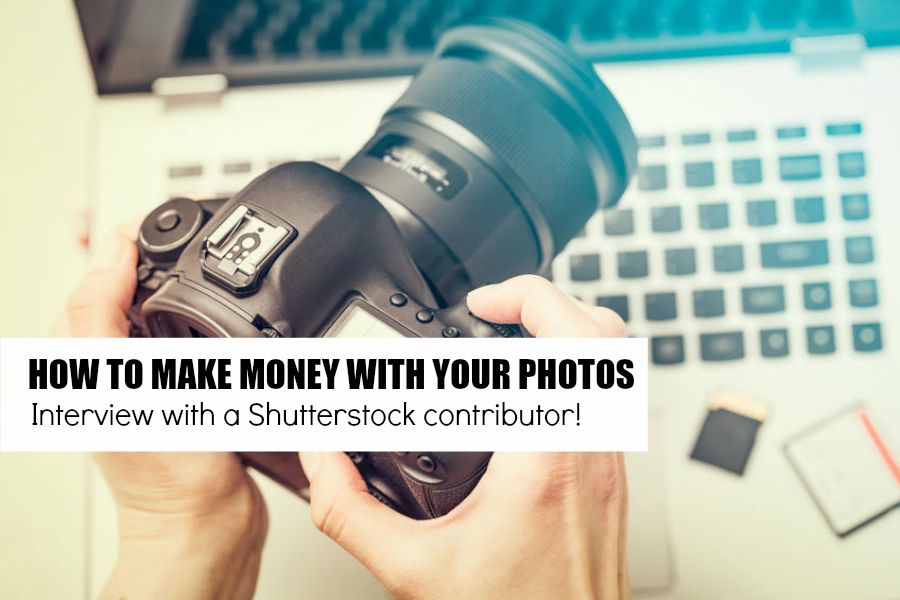Are you a photographer or content creator curious about how your images can earn you money? Shutterstock offers a unique avenue called Editorial Use Only images, which can be a fantastic way to generate income while providing valuable content. In this post, we’ll explore what Editorial Use Only images are, how they work, and the revenue opportunities they present. Whether you’re just starting out or looking to expand your portfolio, understanding this niche can open up new earning potential and help you make the most of your photography skills.
What Is Shutterstock Editorial Use Only Content?

Shutterstock‘s Editorial Use Only content is a special category of images that are typically newsworthy, historical, or of public interest. These images are not meant for commercial advertising or promotional purposes but are instead used to illustrate news stories, documentaries, or educational content. Think of them as the photos you see in newspapers, magazines, or online articles that capture real-world events, famous personalities, or iconic moments.
Here’s what makes Editorial Use Only images stand out:
- Restricted Usage: They can’t be used for commercial purposes like advertising products or services. This restriction helps protect the subjects’ rights and ensures the images are used appropriately.
- Content Focus: They often depict current events, public figures, or historical moments, making them highly relevant for news outlets and educational materials.
- Legal Considerations: Because of privacy and rights issues, these images usually require careful licensing and attribution when used.
For photographers, submitting Editorial Use Only images can be a lucrative way to earn royalties, especially if your photos capture compelling newsworthy moments. Plus, since these images are in demand by media outlets, publishers, and educators, there’s a steady market for high-quality, timely content.
It’s important to note that these images are reviewed by Shutterstock for compliance with their editorial standards, and once approved, they are made available to licensed users under specific restrictions. So, if you’re interested in contributing, understanding the ins and outs of Editorial Use Only content is essential for maximizing your earnings and ensuring your images are used appropriately.
How Revenue Is Earned from Editorial Use Only Images
If you’re new to contributing to Shutterstock, you might be wondering how exactly you make money from your editorial use only images. The good news is, Shutterstock has a straightforward system in place. When someone downloads an editorial use only image, you earn a royalty fee based on several factors, including the type of license, the image’s resolution, and the contributor’s agreement with
Unlike standard licenses, editorial use images are often used in news articles, blogs, or reports to illustrate current events, historical moments, or cultural topics. These images are not for commercial use, which means they can’t be used to promote products or services. Because of their specific purpose, Shutterstock handles licensing slightly differently, but the core idea remains the same: you get paid whenever your image is downloaded for editorial purposes.
Here’s a quick rundown of how the process works:
- Someone finds your image on Shutterstock and purchases an editorial use license.
- Shutterstock processes the download and calculates your royalty based on your contributor agreement and the licensing details.
- You receive a payout that reflects the number of downloads and the license type.
It’s worth noting that editorial images are often downloaded less frequently than commercial images, but they can still be quite lucrative, especially if your images are relevant to trending news topics or iconic moments. Additionally, because editorial images are used in reputable media outlets, they can boost your profile as a contributor and lead to more downloads in the future.
Factors That Influence Your Earnings on Shutterstock
When it comes to earning money on Shutterstock, several factors can influence how much you make per download. Understanding these can help you optimize your contributions and set realistic expectations.
Here are some key factors:
| Factor | How It Affects Earnings |
|---|---|
| License Type | Standard License: Typically yields lower royalties, suitable for most uses. Enhanced License: Offers higher royalties, ideal for large-scale commercial uses. |
| Image Resolution & Size | Higher resolution images generally generate higher royalties, especially if the customer downloads a larger size. |
| Contributor Level & Portfolio | More experienced contributors or those with a large, high-quality portfolio may earn more per download due to Shutterstock’s tiered royalty system. |
| Market Demand | Images on trending topics or with high demand tend to be downloaded more frequently, increasing potential earnings. |
| Exclusive vs. Non-Exclusive | Exclusive contributors might earn higher royalties for certain images, but they restrict where else their images can be used. |
| Geographic Location of Buyers | Some regions may have different licensing fees, influencing your earnings based on where the download occurs. |
In essence, the more relevant, high-quality, and well-tagged your images are, the better your chances of earning more. Also, staying updated with current trends and news can help you submit images that are more likely to be downloaded for editorial purposes. Remember, building a diverse and tailored portfolio can significantly impact your overall earnings on Shutterstock.
Tips to Maximize Your Earnings with Editorial Content
If you’re looking to boost your income from Shutterstock’s Editorial Use Only images, you’re in the right place! While the earning potential can seem a bit tricky at first, with some strategic approaches, you can make the most out of your contributions. Here are some practical tips to help you maximize your earnings:
Understand What Shutterstock Looks For in Editorial Content
Editorial images are often about capturing newsworthy moments, current events, or iconic subjects. Keep an eye on trending topics, news stories, or cultural events. The more relevant and timely your images are, the higher the chance they’ll be licensed and generate income.
Focus on Quality and Uniqueness
- High-Resolution Images: Always upload clear, sharp, and well-composed photos.
- Unique Perspectives: Try to capture images that stand out, offering something different from what’s already available.
- Authenticity: Avoid staged or overly posed shots. Authenticity resonates more with buyers.
Stay Informed About Current Events
Being aware of what’s happening in the world helps you shoot relevant content. Subscribe to news outlets, follow trending hashtags, and keep an eye on social media trends. When a major event occurs, try to capture it responsibly and ethically, ensuring you respect privacy and safety.
Optimize Your Metadata
Accurate and descriptive keywords, titles, and descriptions are crucial. Use relevant terms that a buyer might search for. Think about the context, location, people involved, and emotions conveyed. Good metadata makes your images more discoverable.
Consistently Upload New Content
Regular uploads keep your portfolio fresh and increase your chances of licensing. Set a manageable schedule—whether weekly or monthly—and stick to it. The more relevant images you have, the better your chances to earn more over time.
Engage with the Shutterstock Community
Participate in forums, webinars, and community groups. Learning from others and sharing your experiences can give you new ideas and insights into what sells best.
Leverage Social Media and Personal Networks
Share your editorial images on social platforms or blogs to increase visibility. While Shutterstock handles licensing, building a personal brand can lead to more recognition and opportunities.
Frequently Asked Questions About Shutterstock Editorial Use Income
Many contributors have questions about how they earn from Shutterstock’s Editorial Use Only images. Here are some of the most common queries:
Q1: How much can I expect to earn per license?
The amount varies based on your contributor level, the type of image, and the license type. Editorial images typically earn less than commercial licenses, but they can be licensed more frequently, especially for newsworthy content. On average, earnings per license can range from a few dollars to over twenty, depending on these factors.
Q2: Do I get paid if my image is viewed but not licensed?
No, you only earn a commission when your image is licensed. Views alone don’t generate income, so it’s important to optimize your images for discoverability and relevance.
Q3: How often are earnings credited to my account?
Earnings are usually processed monthly, but this can depend on your payout threshold and payment method. Make sure your payment details are up to date to avoid delays.
Q4: Can I withdraw earnings if I only have a small amount?
Yes, Shutterstock typically has a minimum payout threshold (often around $35). Once you reach that amount, you can request a payout through your preferred method.
Q5: Are there any restrictions on the type of editorial images I can upload?
Yes, Shutterstock has guidelines to ensure ethical and legal compliance. Avoid images that infringe on privacy, depict illegal activities, or are misleading. Always respect copyright laws and obtain necessary permissions if applicable.
Q6: What’s the best way to increase my editorial licensing opportunities?
Stay current with news, produce timely and relevant images, optimize your metadata, and upload consistently. The more relevant your images, the higher the chance they’ll be licensed.
Understanding how your editorial images earn money and applying these tips can help you grow your Shutterstock income steadily. Keep learning, stay inspired, and keep capturing the moments that matter!
Conclusion and Next Steps for Maximizing Your Shutterstock Revenue
Maximizing your earnings from Shutterstock Editorial Use Only images requires a strategic approach combined with consistent effort. By understanding the platform’s policies and optimizing your content, you can significantly increase your revenue potential. Remember, high-quality, relevant images tend to perform better and attract more buyers.
To enhance your earnings, consider the following next steps:
- Research Trends: Keep an eye on trending topics and events to create timely, relevant images that are more likely to be purchased.
- Optimize Metadata: Use descriptive, keyword-rich titles and tags to improve your images’ discoverability in search results.
- Focus on Quality: Invest in good equipment and editing tools to ensure your images meet professional standards.
- Diversify Content: Offer a variety of images across different categories to reach a broader audience.
- Engage with the Community: Participate in Shutterstock forums and webinars to stay updated on best practices and platform updates.
Additionally, monitoring your performance metrics can help you identify which images generate the most income, guiding your future content creation efforts.
| Next Step | Action Point |
|---|---|
| Research Trends | Follow current events and popular themes to create timely content. |
| Optimize Metadata | Use relevant keywords and descriptive titles for better search visibility. |
| Improve Quality | Invest in good gear and editing tools to produce professional images. |
| Diversify Portfolio | Cover multiple categories to attract diverse buyers. |
By implementing these strategies and continually refining your approach, you can effectively boost your Shutterstock editorial earnings and achieve greater success as a contributor.


